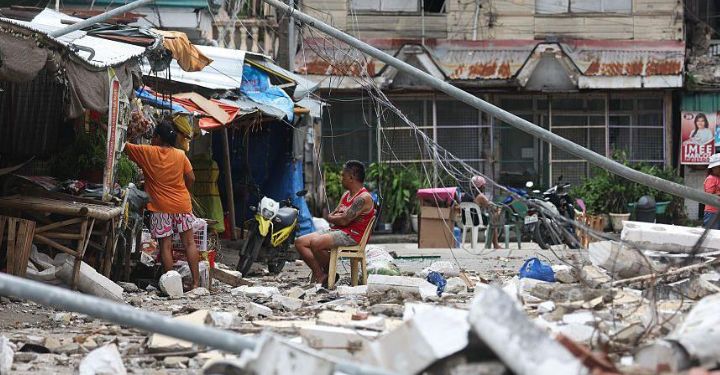The Philippine province of Cebu is in mourning after a 6.9-magnitude earthquake struck its northern region late Tuesday, killing 69 people and injuring hundreds more. Authorities have since declared a state of calamity as the province reels from one of the most powerful quakes to hit the Visayas in decades.
Massive Impact
The tremor’s epicenter was recorded off the coast of Bogo City, but its impact was felt across northern Cebu and even in nearby islands. Most of the casualties occurred in towns with older structures and crowded public spaces. In San Remigio, a sports facility collapsed during a local basketball tournament, killing at least a dozen spectators and athletes.
Local officials describe the destruction as “unprecedented,” with thousands of homes either partially or completely destroyed.
Calamity Declaration
Cebu Governor Pamela Baricuatro invoked a state of calamity across the province, enabling quicker allocation of funds, price controls on essential goods, and streamlined procurement of emergency supplies. Several municipalities, including Bogo and San Remigio, have issued parallel declarations at the local level.
In a televised statement, the governor emphasized the need for national support and international humanitarian aid, stating, “We cannot recover alone. We need help — now.”
Rescue and Recovery
Search and rescue efforts have been complicated by damaged roads and bridges. Emergency crews have focused on the worst-hit towns, working against time and the threat of aftershocks. Temporary shelters have been erected in town plazas and open fields, with displaced residents braving exposure, lack of sanitation, and food shortages.
The Department of Social Welfare and Development (DSWD) has begun delivering relief packs, and national health teams have been dispatched to prevent the outbreak of disease in evacuation centers.
National and International Reaction
President Marcos Jr. expressed sorrow over the tragedy and ordered full mobilization of government resources. Meanwhile, the United Nations and several embassies based in Manila offered condolences and support.
Neighboring countries have expressed willingness to send rescue teams and financial aid, with Japan and Australia among the first to signal assistance.
Lingering Risks
Aftershocks have continued to rattle the region, further damaging already weakened infrastructure. Geologists from the Philippine Institute of Volcanology and Seismology (PHIVOLCS) warn that larger aftershocks cannot be ruled out and advise residents not to return to damaged buildings.
The Road to Recovery
As the focus slowly shifts from rescue to recovery, local leaders stress the need for resilient reconstruction. “We need to rebuild, not just restore,” said Cebu Vice Governor Jose Marco Lim, calling for stronger building regulations and permanent relocation for those living in high-risk zones.
Mental health support and trauma care are also emerging as vital needs, with many residents suffering the psychological effects of loss, displacement, and fear.
A Nation in Mourning
The Philippine flag now flies at half-mast across Cebu’s government buildings. Mourning ceremonies are being held in various municipalities, as grieving families begin to bury their dead — many of whom were children and elderly.
The scale of this disaster has left a deep scar, but also a renewed determination to build back stronger, smarter, and safer.

